Four
CRASHES
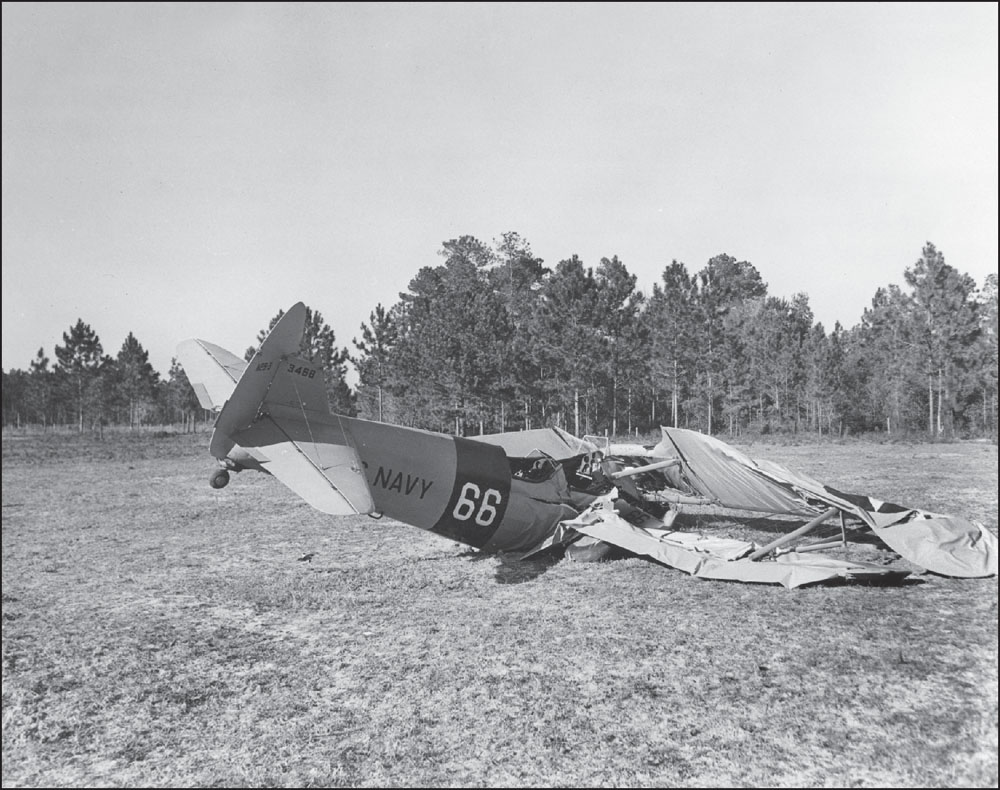
This Stearman crash is one of 110 aircraft crashes documented in the historical records, which have killed more than 200 personnel. These are crashes that occurred either while landing or taking off from the station, during training flights that originated from or were returning to the station, or involved aircraft from squadrons attached to the station. These records are not all-inclusive, as additional crashes are discovered occasionally in old records or are found when inquiries come into the station about a past crash.
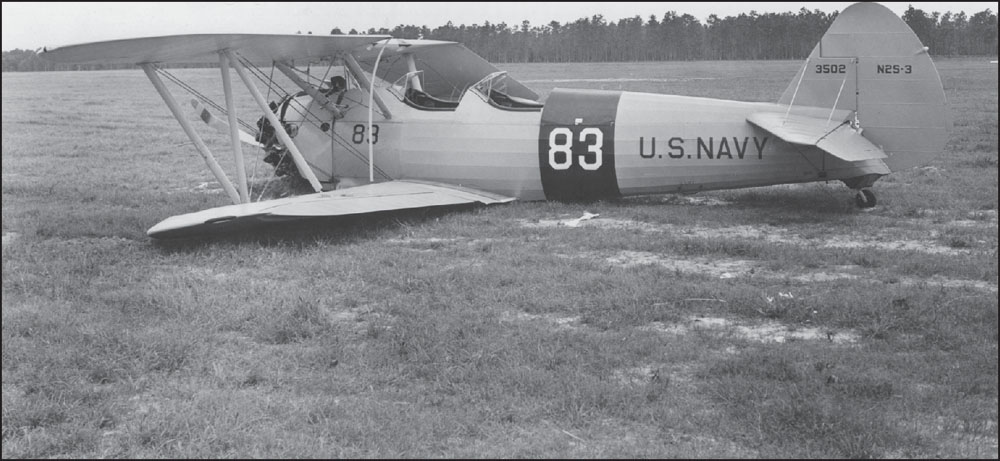
Stearmans were involved in the first crashes at the station in 1941, which caused the first aviator fatality. This was mainly due to the fact they were the dominant aircraft at the station early in 1941 and cadets were learning to fly in them. This Stearman did a soft landing after developing an engine problem about five miles west of the station.

This Stearman crashed fairly violently west of the station. The exact cause of this crash is not known, nor is it described in the aircraft crash files. It is also not known if there were any fatalities in this crash, but the damage to the cockpit area seems pretty severe.

This North American Aviation SNJ-3 (bureau number 01779) developed an engine problem approaching the station and crashed in the woods near the weapon magazines in December 1943. The cockpit is fairly intact even though the aircraft is all but destroyed. Of all the crashes that have occurred at the station, the crash on November 6, 1944, was by far the most tragic. An R4D transport plane, the Navy variant of a DC-3 Skytrain, was ferrying a group of nurses to the station. While on final approach over the St. Johns River, it flew head-on into an F4U Corsair fighter plane that had just departed the station. All personnel on both aircraft, a total of 18 people, were killed. Of note, this crash was not covered by the local Jacksonville papers, as the base’s public information officer worked with the press to keep the accident out of the news. Aircraft safety remains a huge priority with the Navy, and tremendous strides have been made to date. Fortunately, aircraft accidents at the station are extremely rare today.
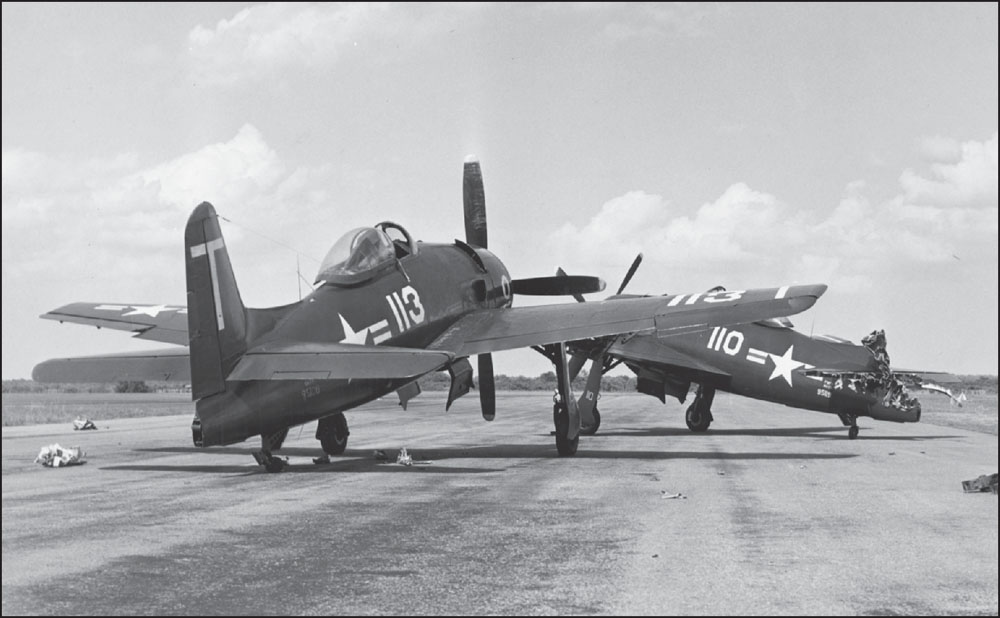
These two Grumman F8F Bearcats were involved in a taxi accident on May 3, 1950, on runway 27. Both aircraft were assigned to Fighter Squadron VF-11, and the tail of one Bearcat was obviously chewed off by the propeller of the other Bearcat, which ran up on it. Plane-taxiing accidents happened quite frequently.
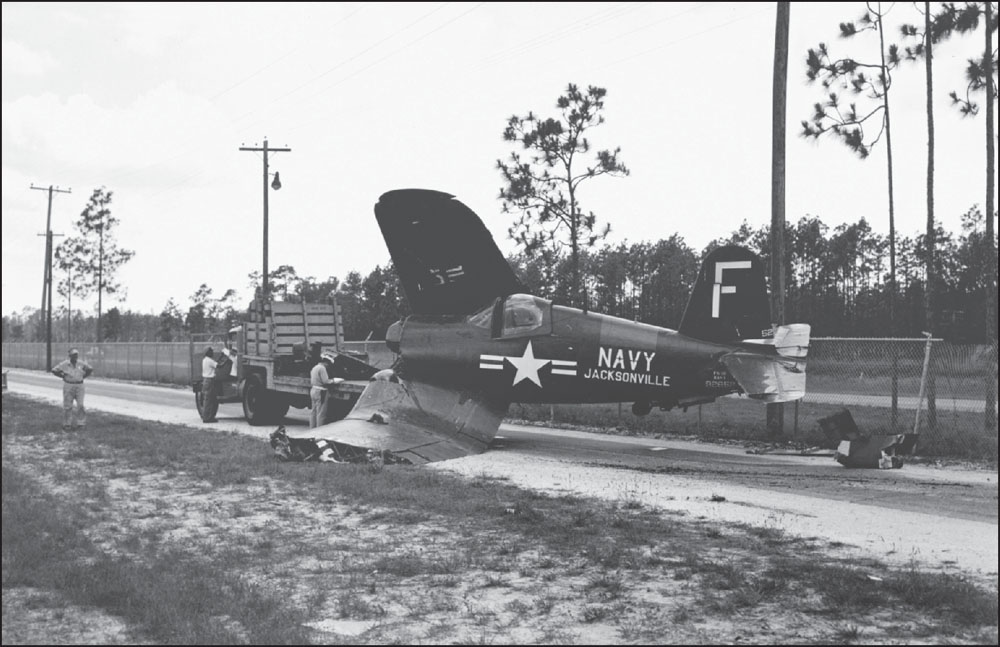
This Vought F4U Corsair was being towed along the perimeter road to the disposal yard when the driver got the wing too close to the fence, which clipped the wing and did considerable damage to the aircraft. Fortunately, it was being disposed of, so the only damage requiring repair was done to the fence.
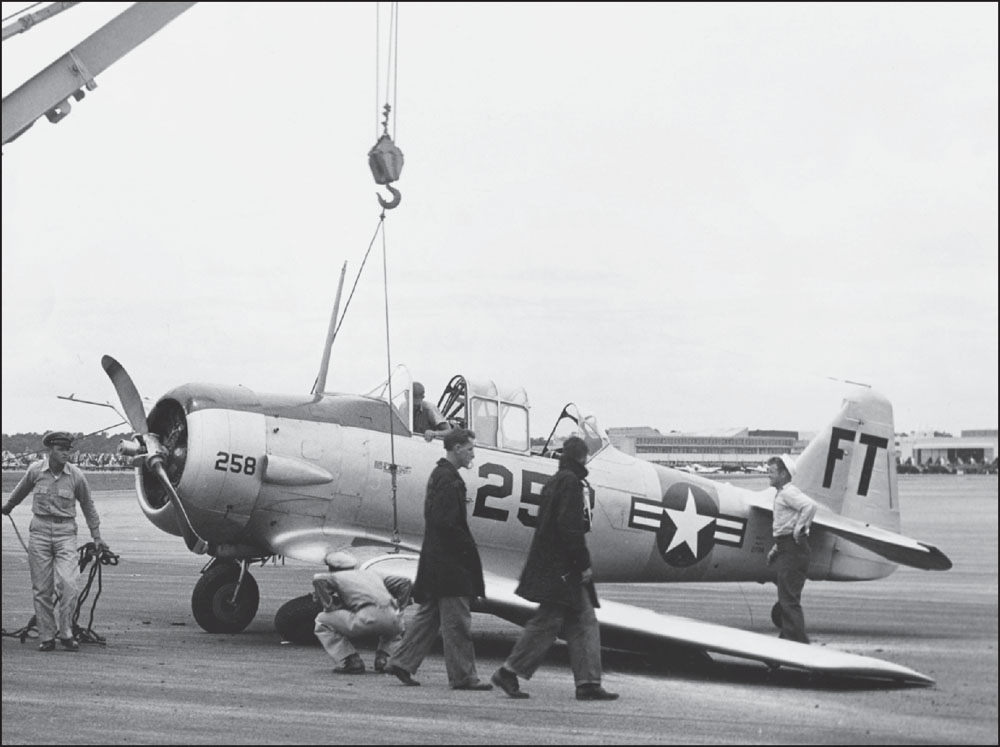
This North American Aviation SNJ-5 had a landing-gear failure upon landing on June 13, 1947. Here, the crash crane, nicknamed “Tilly,” lifts the aircraft so the landing gear assembly can be inspected and the aircraft can be removed from the runway.
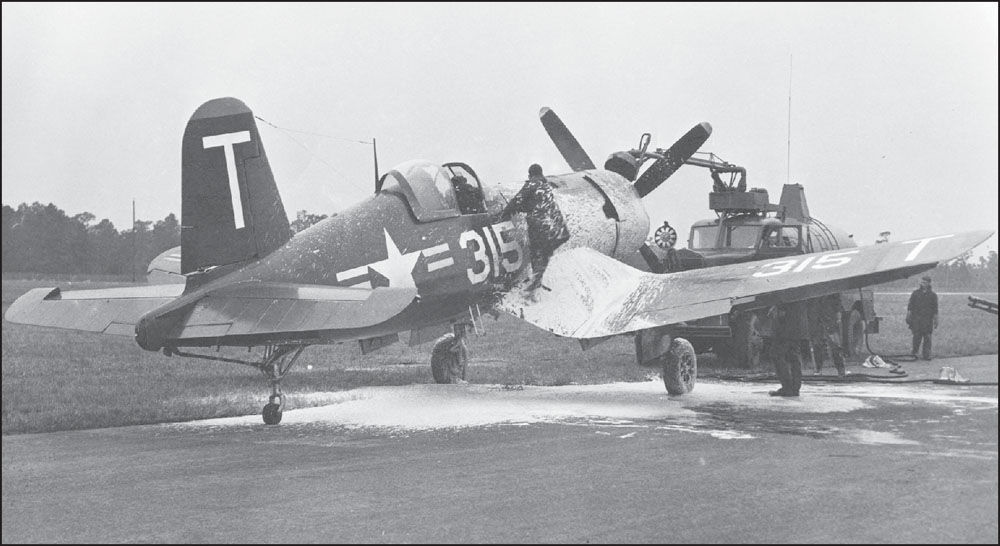
A Vought F4U-5 Corsair sits on the flight line after landing and experiencing an engine fire, which was extinguished using foam by the airfield crash fire truck, on March 4, 1950. Engine fires were not uncommon in the early 1950s. Fortunately, this pilot escaped unhurt and the damage to the aircraft was minor.
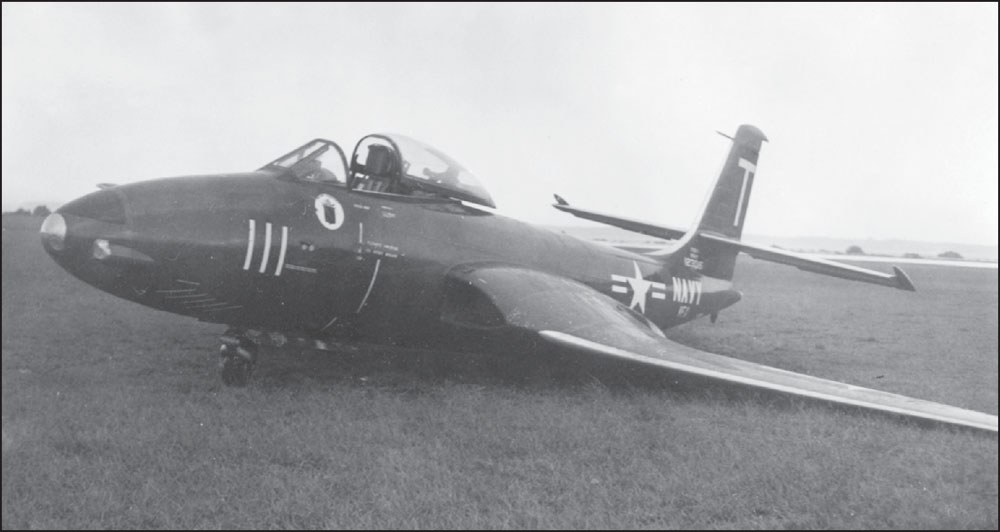
A McDonnell F2H-1 Banshee’s port landing gear failed to go down as the jet returned to the station on July 19, 1950. The pilot was forced to do a belly landing, resulting in minor damage to the plane. This jet was assigned to Fighter Squadron VF-11, home-based at the station at that time.

This dump truck turned a corner too sharply along a line of Lockheed TV-1 Navy jets parked on the flight line on July 7, 1954. A jet wing tank pod went through the windshield of the dump truck when the driver cut the corner too close, causing the truck to swerve to the left, where it hit another TV-1 jet before coming to a stop.

This Lockheed NC-121 Super Constellation, assigned to the Hurricane Hunters Squadron VW-4, went off the end of the runway on October 11, 1957. Air bags were used to lift the wing and landing gear, which sank into the soft dirt. Then rocks were used to fill in depressions underneath to make a harder surface so the plane could be towed back onto the runway.

On Saturday, July 16, 1966, a Fairchild C-119 transport took off from the station and suffered an engine fire almost immediately. At 7,000 feet, all 34 personnel donned their parachutes and jumped, some for the first time. Three minutes later, the empty plane crashed near Otis Road and the Atlantic Coast Line Railroad tracks in Jacksonville. It took rescue teams many hours to find all of the men, many of whom were dangling in trees by their parachutes, but no lives were lost in the crash. (Associated Press Wire photograph.)
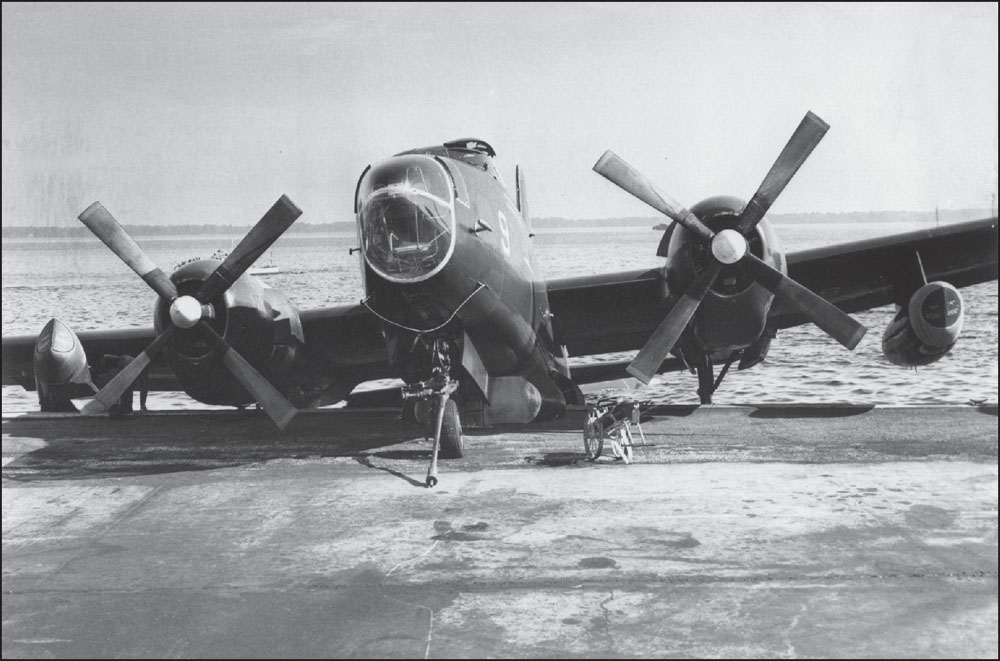
A Lockheed P2V Neptune assigned to the Hurricane Hunters Squadron VW-4 at NAS Jacksonville is seen here partially submerged on December 11, 1956. While towing the aircraft from its parked position on the seawall parking ramp, the tow bar broke, allowing the plane to roll backward, eventually going into the St. Johns River.
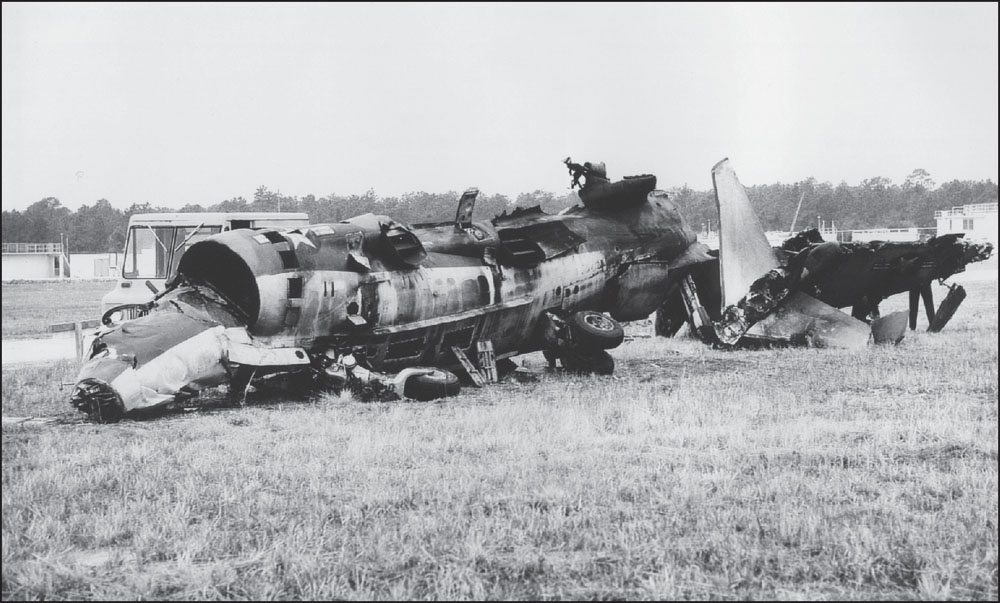
On January 10, 1978, a McDonnell-Douglas AV-8A Harrier jet assigned to Marine Corps Squadron VMA-542 was at the station preparing for landing. As the plane made the transition from flight to hover mode for the landing, it suddenly veered off and crashed. The pilot safely ejected out of the sideways aircraft, but the plane was totally destroyed. (Photograph by R.E. Kling.)

Three Convair C-131 Samaritan transport planes are seen here on the station ramp in 1981. These aircraft would routinely arrive at the station transporting personnel and equipment. The closest plane in the photograph was the Guantanamo Bay station’s transport plane at the time. Scheduled contracted flights to and from Guantanamo Bay still fly on Tuesdays and Saturdays from the station.

On April 30, 1983, the Naval Station Guantanamo Bay Convair C-131 transport plane left NAS Jacksonville heading to Cuba. It developed an engine fire shortly after takeoff. The pilot immediately tried to return to the station. Parts of the burning engine hit cars on Old King’s Road in the Mandarin area of Jacksonville. The left wing finally separated, and the aircraft crashed into the St. Johns River just short of the approach runway, killing 14 personnel. There was one survivor.

This Sikorsky SH-3 Sea King, assigned to station-based Helicopter Squadron HS-1, is hoisted out of the St. Johns River and placed onto the fuel pier at the station in 1989. The helicopter had a tail rotator failure and was able to land in the St. Johns River, deploy its floats, and get towed back to the station by rescue boats.

This Lockheed P2V-5 Neptune did a partial wheel-up landing at NAS Jacksonville when it arrived from Kissimmee, Florida, on March 5, 1992. The port main landing gear failed when the plane was ready to land. Remarkably, the pilot landed on two wheels, then turned the plane into the grass just as he set it down, only doing very minor damage to the aircraft. The plane, restored by Patrol Squadron VP-5 in 2011, can be seen today in the station’s static display park. (Photograph by R.E. Kling.)

















